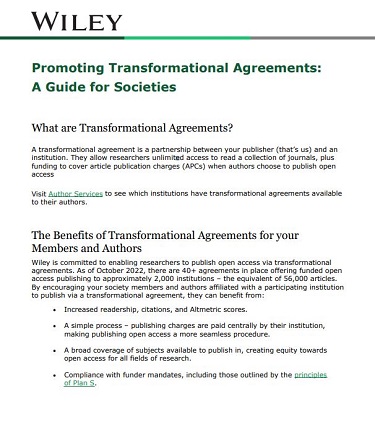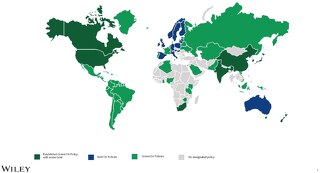implementing-a-journal-social-media-strategy-a-succesful-case-study
July 25, 2016
The Journal of Paediatrics and Child Health (JPCH) is an official journal of the Royal Australasian College of Physicians and has been in print for over 50 years. In 2013 the journal implemented a social media strategy for the first time. In two years the journal has used its social media presence to achieve multiple meaningful goals with a small team and very low costs.
We started with a clean slate. JPCH already had an online version of the journal but had never had a social media presence. I was very aware that we needed to have clear goals or we could spend a lot of time and energy online without achieving anything meaningful. Our strategy was guided by two principles:
1. Be useful:
- To our readers, our authors and to the Board
- To achieve this by making it easier to find and promote articles, and to be more engaged
with topics of interest to the journal such as refugee health – see below.
2. Promote the journal:
- Increase our online article downloads and page views
- Broaden our audience both geographically and beyond our particular professional group
We started by examining what other journals were doing in social media. We discovered two key things that influenced how we measured the success of our strategy:
1. Developing a social media following takes time – years not months
2. Visibility on social media does not equal lots of readers. On average on Twitter about 1 person in every 1,000 who sees a tweet will click through to the article.
Finally, it was important that the journal was its own presence on social media, not simply a subset of my own (or anyone else’s) personal social media profile. This had two benefits:
1. Other people can join our social media team behind the scenes without any change to the journal’s public identity
2. If I leave this role I can hand over the journal’s whole social media presence simply by transferring passwords to the next editor. None of my personal accounts are tied up in the journal’s operations.
We achieved this independence by registering the domain name JPCHonline.com with Google Apps. It gives us an email address and the ability to create simple websites.
Finally, I use a range of tools to help create and manage shareable social media content from the articles we publish in the journal. All in all we spend about $250 per year on our social media presence. There are
more details on these at socialmedia.jpchonline.com.
Achievements
JPCH has a profile on Twitter and Facebook as well as an online portal [www.JPCHonline.com]. Even our relatively small number of followers equals a significant number of people reached over time: as of March 2016 posts to our social media accounts were reaching more than 135,000 people per year. Most importantly, these readers are not our traditional audience and they engage with our articles in a completely new way.
The JPCH board has spoken out strongly against the mandatory detention of children seeking asylum in Australia. We created a simple website for other media and interested lay people, and our social media presence has allowed us to engage in the public debate in real-time. We have also been able to promote the academic articles we published on this issue to a general audience.
Through social media a single article on this issue was seen by over 300,000 people – almost none of whom would ordinarily know about or access our journal.
Finally, the JPCH board decided in 2015 to create a dedicated space in the journal for patients and their families to communicate their experience of healthcare to health professionals. Very few journals in our field do this. We used social media to promote the initiative and it has led to eight accepted articles in just six months. Patients and parents are not the usual audience for our journal and social media was the perfect way to reach out to them.
Conclusion:
Creating a social media strategy, online profiles and engaging in social media for JPCH has been a time-consuming yet wholly rewarding experience. Having a supportive Board and publishing manager have been crucial, as there are risks as well as benefits to increasing our online profile. Two years after starting we now have an established platform and have achieved meaningful goals. The Journal of Paediatrics and Child Health is unlikely to ever have the largest social media presence, but what we have has still been well-worth the effort.
Benefits of Implementing a Journal Social Media Strategy:
“One major aspiration when I started as Editor-in-Chief in 2009 was to help paediatricians feel more involved with their own JPCH. I wanted to create conversation rather than monologue. My senior colleagues who were social media savvy were time-poor. The challenge was to find a keen, young doctor who understood the social media and the paediatric issues and had time, energy and enthusiasm. Luckily I found Chris Elliot, or even better he found me.”
Professor David Isaacs,
Consultant Paediatrician and Editor-in-Chief
“Many of the topics mentioned in JPCH are topics also discussed in mainstream media—things like breastfeeding, vaccines, nut allergies and the plight of refugee children. Chris has managed
to inject the journal into these discussions, ensuring these discussions were tempered with good science and exposing the journal to a new audience.“
Julia Ballard, Senior Publishing Manager
For more information or to contact the Journal of Paediatrics and Child Health Web: JPCHonline.com | Twitter @JPCHonline | Facebook /JPCHonline
For more information or to contact Dr Chris Elliot Web: DrChrisElliot.com.au/bio | Twitter @DrCElliot
Image credit: @JPCHonline










